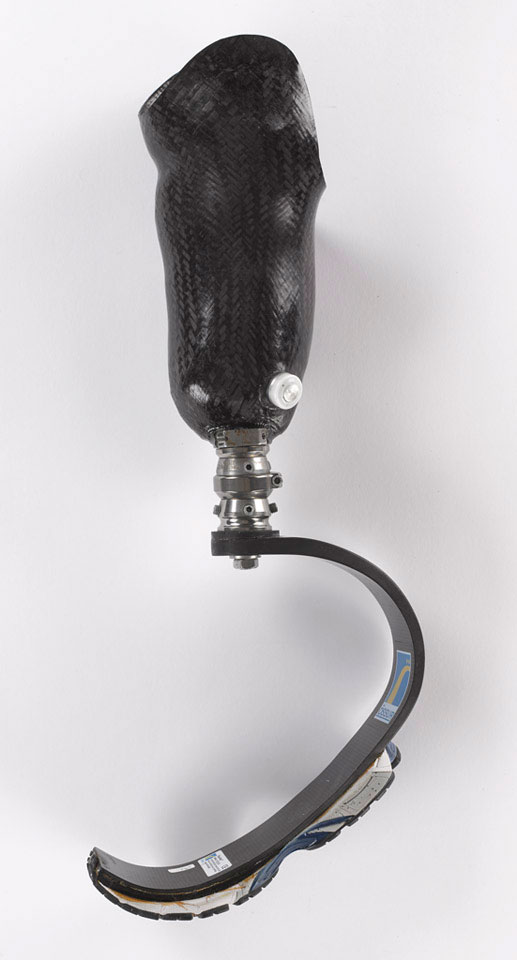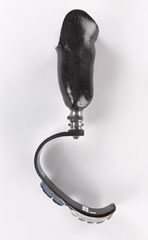
Online Collection
Below-knee running prosthetic leg for the right leg, with Ossur 'Flex-Run' running blade, 2015 (c)
Manufactured by Blatchford and used at the Defence Medical Rehabilitation Centre, Headley Court, Surrey, 2015 (c).
The prosthetic leg's socket is made of light weight and durable carbon fibre. In the early days of Headley Court the running blades were issued without a sole/tread. They were found to be very slippery, so it was decided to glue a running shoe sole to the bottom of the blade. This type of leg would only be provided to a patient with a bellow-knee amputation once they had proved that they could run with their normal prosthetic leg.
Improvised Explosive Devices (IEDs) were widely used by insurgents in Afghanistan and Iraq to inflict lethal and debilitating injuries on Coalition forces during the conflicts that developed after the terrorist attacks on the United States on 11 September 2001. A Ministry of Defence report, 'Amputation Statistics 1 April 2014 - 31 March 2019', published on 1 August 2019, records that from 7 October 2001 to 31 March 2019, 333 UK service personnel, serving in the Afghanistan or Iraq, suffered injuries that included a traumatic or surgical amputation.
NAM Accession Number
NAM. 2019-02-6-1-1
Copyright/Ownership
National Army Museum Copyright
Location
National Army Museum, Study collection
Object URL
https://collection.nam.ac.uk/detail.php?acc=2019-02-6-1-1



